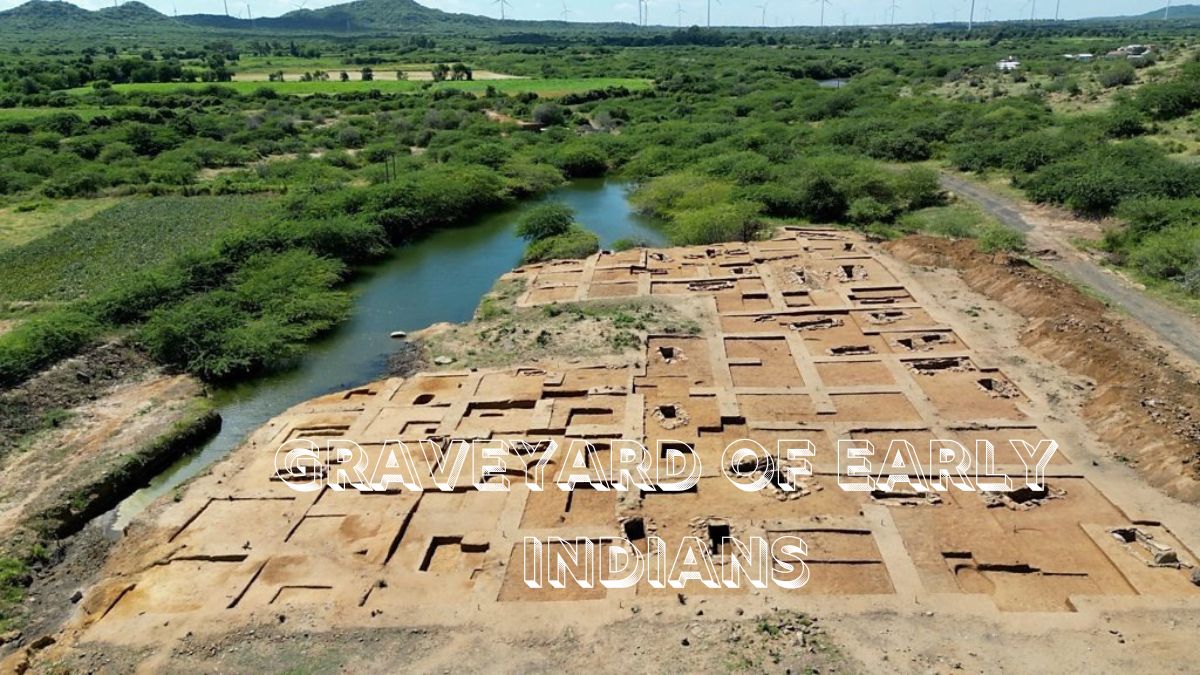News
Finding the Truth Behind a Trails Carolina Death

In recent years, the controversial and criticized Trails Carolina wilderness rehabilitation program for troubled youths has been plagued by a haunting shadow of “Trails Carolina Death.” This unsettling revelation has cast a somber light on a program initially lauded for its innovative approach to assisting troubled teens. Let’s delve into the heartbreaking incidents, controversies, and the concerns of parents regarding Trails Carolina, while exploring the path forward.
Trails Carolina’s Origins
Situated amidst the serene landscapes of North Carolina, Trails Carolina initially garnered attention for its pioneering methods of working with adolescents struggling with emotional and behavioral issues. The program aimed to provide a therapeutic environment seamlessly blending the healing power of nature.
The Tragic Incidents
- The Case of Sarah’s Demise: Perhaps one of the most widely publicized incidents that shook Trails Carolina was the tragic death of 17-year-old Sarah, a program participant. Sarah’s family had entrusted her well-being to Trails Carolina, but she tragically lost her life during her time in the program.
- John’s Mysterious Disappearance: Another heart-wrenching incident revolved around 16-year-old John, who inexplicably vanished while participating in the program. Extensive search efforts yielded no results, leaving his family in anguish and raising serious safety concerns about Trails Carolina.
The Controversies
- Lack of Oversight: Criticism has been levied at wilderness treatment programs, including Trails Carolina, for their alleged lack of oversight and accountability. Sarah and John’s tragic experiences exemplify the perils that can emerge in the absence of proper control.
- Treatment Effectiveness: Doubts have arisen about the efficacy of wilderness therapy at Trails Carolina in addressing severe mental health issues. Some argue that conventional treatment methods might better suit certain patients.
The Concerns of Parents
Many parents who once considered sending their children to Trails Carolina now harbor profound reservations about the program’s safety. These concerns underscore the necessity of programs being transparent and accountable.
See Also: Claudia Goldin: A Trailblazer in Understanding Gender Pay Gap
The Way Forward
- Increased Regulation: Recent tragedies like those at Trails Carolina have underscored the pressing need for heightened regulation and oversight of wilderness treatment programs. Achieving this will require the establishment of well-defined guidelines and the implementation of stringent monitoring procedures.
- Informed Decision-Making: Parents and guardians contemplating enrolling their children in any therapy program must be well-informed. If they harbor doubts about a program, it’s crucial to research it thoroughly, seek advice, and explore alternative options.
- A Buffalo personal injury lawyer shares: I would encourage affected families to explore their legal options and seek justice for the harminflicted on their loved ones.
Conclusion
“Trails Carolina Death” is undoubtedly a profoundly distressing subject. The tragic events associated with this outdoor rehabilitation program have cast serious doubts on its viability. As we move forward, it is imperative to prioritize the safety and well-being of children and ensure that every initiative designed to help them adheres to the strictest safety and transparency standards.
FAQs
Q: Is Trails Carolina still operating after these incidents?
A: Although under criticism and investigation, Trails Carolina continues to operate.
Q: Are there alternatives to wilderness therapy programs like Trails Carolina?
A: Residential treatment clinics and outpatient therapy are just two of the numerous therapeutic options available.
Q: What should parents look for when considering a therapy program for their child?
A: Parents should conduct thorough research, verify a program’s legitimacy through accreditation checks, read reviews, and consult with mental health experts.
News
Unveiling India’s Ancient Burial Ground: Clues to the Lives and Deaths of Early Indians

In a remote village within India’s western state of Gujarat, near the Pakistan border, scientists made an astonishing discovery in 2019. The researchers initially thought they had discovered an ancient burial ground, but it turned out to be a vast cemetery, revealing insights into the lives and deaths of one of the world’s earliest urban civilizations. This burial site, spanning 40 acres, sheds light on the enigmatic Indus society, also known as the Harappan civilization, which thrived around 5,300 years ago.
The Enigmatic Indus Society
The Indus society, characterized by austere farmers and traders living in walled, baked-brick cities, rose to prominence in what is now northwest India and Pakistan. Despite its significance, the civilization remains shrouded in mystery. Researchers have unearthed over 2,000 sites related to this ancient society in India and Pakistan, but this newly discovered cemetery near Khatiya village in Gujarat could potentially become the largest “pre-urban” cemetery ever found.
A Glimpse into the Past
Researchers estimate that this sprawling burial ground was in use for approximately 500 years, dating from 3200BC to 2600BC, making the oldest graves around 5,200 years old. While excavations have only revealed one intact male human skeleton and partially preserved skeletal remains, they have uncovered a treasure trove of burial artifacts.
These artifacts include more than 100 bangles and 27 shell beads, ceramic vessels, bowls, dishes, pots, and various other items. Among the findings, researchers have discovered beads crafted from semi-precious lapis lazuli, showcasing the society’s extensive trading networks. The graves themselves have unique features, with sandstone-lined burial shafts pointing in various directions, some oval and others rectangular. Smaller graves suggest the burial of children.
See Also: Border Wall Expansion in Texas
Burial Practices and Social Clues
The burial practices of the Indus people differ significantly from the lavish funerals of Egypt and Mesopotamia. Instead of jewels and weapons, people typically wrapped the deceased in textile shrouds and placed them in rectangular wooden coffins. They often filled the grave pit with pottery offerings before lowering the coffin. Some individuals buried the deceased with personal ornaments like bangles, beads, and amulets. Notably, they occasionally buried women with copper mirrors.
Adults buried the deceased with various types of vessels for serving and storing food, along with specific ornaments. For example, they commonly placed shell bangles on the left arms of adult females. In contrast, they usually did not bury infants and children with pottery or ornaments.The absence of substantial wealth in the graves suggests a society marked by relative equality, with most individuals appearing well-fed and healthy.
Unearthing the Mysteries
The massive burial ground in Gujarat has raised several questions. Its sheer size prompts inquiries into whether it served as a communal resting place for nearby settlements, or if it hints at the existence of a larger settlement yet to be discovered. Some researchers speculate that it could have functioned as a sacred cemetery for nomadic travelers, considering the distant origin of the lapis lazuli found in the graves, possibly from Afghanistan.
Additionally, it remains uncertain whether this was a primary burial site or if bones from the deceased were interred separately. Abhayan GS, an archaeologist at the University of Kerala, highlights that many questions persist, and further excavation is needed.
The Quest Continues
As scientists plan to excavate a site near Khatiya for potential settlements, they hope to unravel more mysteries about the early Indians Ancient Burial Ground. While the writing of the Indus civilization remains undeciphered, these excavations may provide valuable insights into their daily lives, their settlements, and the people who lived and died during this ancient era. The journey to uncover the secrets of the Indus civilization continues, offering a glimpse into the distant past of India’s history.
News
Border Wall Expansion in Texas: Debates, Effectiveness, and Community Reactions

Starr County in Texas may seem like a peaceful place, with its rolling hills, small towns, and proximity to the Rio Grande. However, it has long been a bustling crossing point for migrants, and it’s once again at the center of the border security debate in the US. In a surprising turn of events, the Biden administration recently announced plans to build a 20-mile border wall section in the area, contrary to President Biden’s 2020 campaign promise to halt wall construction. This decision has reignited the contentious discussion around border control measures.
Background
Former President Trump ordered the renovation and fortification of nearly 460 miles of border wall, with only 80km being newly constructed. Since leaving office, he and some Republican lawmakers have called for additional barriers due to rising migrant figures at the southern border. However, the effectiveness of border walls remains a divisive and political issue.
Debate Over Effectiveness
While Department of Homeland Security data from late 2020 suggests that new walls reduced illegal entry in some sectors by nearly 90%, academic studies have presented more modest results. One analysis from the Cato Institute indicated that Border Patrol saw more detentions and successful illegal crossings even before the Trump administration ended, implying that the wall was ultimately unsuccessful. Another study in the American Economic Journal: Applied Economics found that border barriers reduced migration by 35%, but hiring more border agents might be equally effective.
The Biden administration has consistently expressed its belief that barriers are not effective, arguing that they are redirecting the flow of migrants to more easily patrolled areas.
Border Wall Construction Details
It’s essential to clarify that the term “wall” itself is misleading. Customs and Border Patrol describes the border barrier as a range of structures, from picket fences to concrete and steel levees, and even large metal barricades known as “Normandy barriers,” designed to stop vehicle intrusions but passable on foot. The new wall construction planned for Starr County will consist of 18-foot steel fence panels placed within portable concrete barriers, bolstered by detection technology and lighting.
Bypassing Barriers
Even in sectors with tall, solid barriers, determined migrants often find ways to overcome them. They use ladders, ropes, or cut and climb through the barriers. In reality, these barriers act more like speed bumps, delaying entry by a few minutes. They are harder for vulnerable groups, such as children, the elderly, or the disabled, and can result in injuries or fatalities. Barriers are also irrelevant for asylum seekers, who can legally challenge deportation once they cross the international boundary.
See Also: Kevab Eris Trial: Unveiling the Future of Energy Efficiency
Community Reactions
Border communities have mixed feelings about the wall extension. Some residents want a strong border but oppose a wall, while others are open to the idea but concerned about implementation. Eagle Pass activist Jessie Fuentes, who initially fought against previous border wall construction, acknowledges that barriers can serve a purpose if strategically placed to assist migrants in finding shelter or relief.
Alex Garcia, a resident of neighboring Webb County, understands the need for a barrier but worries about its environmental impact and the risk it poses to migrants attempting to cross.
Historical Context
Border walls are not a new concept and have been constructed by several US presidents, including 128 miles during the Obama administration. However, experts argue that these barriers have had little long-term impact on migration flows and triggers, which determine the number of migrants arriving at the US-Mexico border.
Conclusion
The recent decision to expand the border wall in Starr County has reopened debates about its effectiveness and impact on border communities. While data suggests varying degrees of success, the consensus remains elusive. Ultimately, addressing the complex issue of migration requires comprehensive solutions that go beyond physical barriers. As former Mexican ambassador Arturo Sarukhan emphasizes, enforcing one’s way out of a migration crisis is not a 21st-century solution, and a more holistic approach is needed to address the root causes and consequences of migration.
News
DigitalNewsAlerts: Information Overload and Ensuring Accuracy in the Digital Age

The introduction of DigitalNewsAlerts has brought about a significant change in the way information is disseminated in today’s fast-paced digital environment. The way consumers consume news has been completely transformed by these notifications, which offer short, succinct updates, tailored information, and continuous updates on significant events. Notwithstanding the advantages, there are worries about deceit, excessive data, and the widespread dissemination of false information. In order to guarantee the precision and dependability of news alerts, media companies and innovation firms must carefully examine their tools and procedures as we go through this digital era.
The Rise of DigitalNewsAlerts
The proliferation of smartphones and other digital devices has fueled the rise of digital news alerts. These alerts serve as instantaneous notifications delivered directly to users’ devices, providing them with real-time updates on breaking news, events, and developments across the globe. Unlike traditional news sources, which require active engagement from users, news alerts passively deliver information, catering to the fast-paced nature of modern life.
One of the key advantages of DigitalNewsAlerts is their ability to provide personalized content. Through sophisticated algorithms and user preferences, news alerts can tailor information based on individuals’ interests, location, and past behavior. This personalization enhances user engagement and ensures that individuals receive relevant and timely updates tailored to their preferences.
Furthermore, DigitalNewsAlerts excel in providing quick, concise updates, making them ideal for individuals seeking immediate information without the need to sift through lengthy articles or broadcasts. This feature aligns with the increasing demand for instant gratification and information consumption in today’s society.
Challenges and Concerns
Despite the undeniable benefits of DigitalNewsAlerts, there exist significant challenges and concerns that warrant attention. Chief among these concerns is the issue of data overload. In an era inundated with information, users may find themselves overwhelmed by the sheer volume of news alerts, leading to cognitive overload and decision fatigue. Moreover, the constant barrage of notifications can disrupt users’ daily lives, impeding productivity and fostering a sense of information fatigue.
Another pressing concern is the proliferation of fake news and misinformation through digital news alerts. The viral nature of social media platforms and the ease of sharing information have made it increasingly challenging to discern between credible sources and dubious content. As a result, fake news can spread rapidly through news alerts, potentially influencing public opinion and exacerbating societal divisions.
Ensuring Accuracy and Reliability
In light of these challenges, it is imperative for media organizations and innovation entities to prioritize accuracy and reliability in the dissemination of news alerts. Several strategies can be employed to achieve this objective:
- Robust Fact-Checking Mechanisms: Media organizations must implement rigorous fact-checking processes to verify the accuracy of information before disseminating it through news alerts. This entails cross-referencing multiple sources, verifying the credibility of sources, and scrutinizing the validity of claims.
- Transparency and Accountability: Media organizations should be transparent about their editorial processes and decision-making criteria when selecting and prioritizing news alerts. By fostering transparency, organizations can instill trust among users and demonstrate their commitment to delivering accurate and reliable information.
- Algorithmic Transparency: Given the role of algorithms in personalizing news alerts, it is essential for organizations to ensure transparency and accountability in algorithmic decision-making. This includes disclosing the factors and criteria used to tailor news content, as well as providing users with control over their preferences and settings.
- Education and Media Literacy: Empowering users with media literacy skills is paramount in combating misinformation and fake news. Media organizations, alongside government agencies and educational institutions, should invest in initiatives aimed at educating the public about critical thinking, source evaluation, and fact-checking techniques.
- Collaboration and Partnership: Collaboration between media organizations, technology companies, and regulatory bodies is essential in addressing the challenges posed by digital news alerts. By working together, stakeholders can share best practices, develop industry standards, and implement technological solutions to enhance the accuracy and reliability of news alerts.
Conclusion
DigitalNewsAlerts have revolutionized the distribution of information, offering unparalleled convenience, personalization, and immediacy. However, amidst the benefits lie concerns regarding data overload, deception, and the spread of fake news. To ensure accuracy and reliability, media organizations and innovation entities must adopt a multi-faceted approach that prioritizes robust fact-checking mechanisms, transparency, algorithmic accountability, media literacy education, and collaboration. By collectively addressing these challenges, we can harness the transformative potential of digital news alerts while safeguarding the integrity of information dissemination in the digital age.
-

 Technology8 months ago
Technology8 months ago社工库: Navigating the Depths of Social Engineering Databases
-

 Education7 months ago
Education7 months agoFortiOS 7.2 – NSE4_FGT-7.2 Free Exam Questions [2023]
-

 Technology3 months ago
Technology3 months agoAmazon’s GPT-55X: A Revolutionary Leap in AI Technology
-

 History & Tradition9 months ago
History & Tradition9 months agoλιβαισ: Unraveling Its Mystique
-

 Education8 months ago
Education8 months agoExploring the Significance of 92career
-

 News8 months ago
News8 months agoClaudia Goldin: A Trailblazer in Understanding Gender Pay Gap
-

 Entertainment7 months ago
Entertainment7 months agoFree Tube Spot: Your Gateway to Endless Entertainment
-

 General8 months ago
General8 months agoPower of XCV Panels: Revolutionizing Modern Technology:
